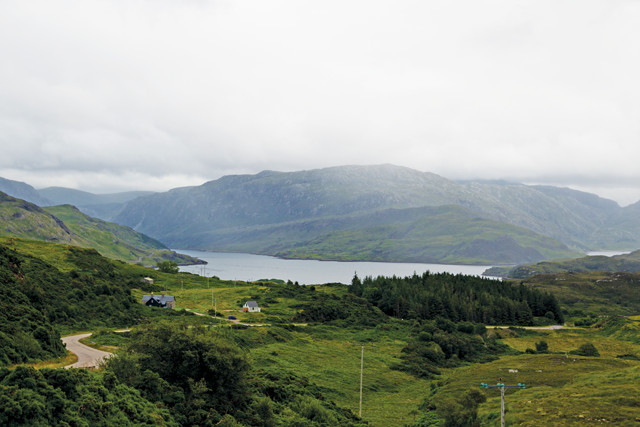
by Ward Chesworth Tuesday, September 19, 2017

A hike through the Scottish Highlands could be a delightful sojourn or a masochistic, miserable plod through rain. Credit: Alex Berger, CC BY-NC 2.0.
Callan Bentley’s delightful article on the Scottish Highlands in the May 2017 EARTH took me back to my first encounter with the Moor of Rannoch and the Pass of Glencoe in the Grampian Highlands, about 80 kilometers south of the part of Scotland that Bentley describes. According to “Monty Python and the Holy Grail,” it’s where the Bridge of Death and the Gorge of Eternal Peril are. And in 1960, cartoonist Carl Barks revealed that the Hound of the Whiskervilles might be found prowling the vicinity of Castle McDuck, ancestral home of Disney’s Donald on Rannoch Moor.
As a teenager, I was inspired to visit the area after reading Robert Louis Stevenson’s “Kidnapped.” Stevenson tells the story of 17-year-old David Balfour, who survived a shipwreck off the west coast of Scotland before making his way back to Edinburgh with Alan Breck Stewart, a renegade supporter of Bonnie Prince Charlie, pretender to the British throne. The most exciting part of the story is the “flight through the heather” up the Pass of Glencoe and across Rannoch Moor, with King George’s Redcoats in murderous pursuit.
Two hundred years after Balfour’s fictional shipwreck, and a year older than young Davie was in the story, I hiked through the heather in the opposite direction — across the moor and down the glen. For me it was the beginning of a life-long love affair with geology. This part of Scotland is where the last ice sheet of the Quaternary glaciations wasted away. Relieved of the weight, the country is still rebounding, rising at a rate of about 10 centimeters per century. And as a consequence, this is the very highest of the Highlands, with the tallest peak in Britain, Ben Nevis (1,345 meters), just north of the Moor.
Some 400 million years before these Quaternary events (and unsuspected by me at the time of my hike), the site was the scene of a collision between Laurasia (proto-North America) and Baltica (the northern European plate), with a minor collection of continental bits and pieces (Avalonia) in between. Subduction consumed Avalonia beneath Laurasia, and in Glencoe you can see the calc-alkaline volcanic rocks that accompanied the process. Five major eruptions evacuated some 1,000 to 3,000 cubic kilometers of material from an underground magma chamber, and the resulting collapse structure, or caldera, was of the same massive scale as Yellowstone Caldera in Wyoming.
More accessible to the nongeological visitor is the experience of wild nature, Scottish style. “The Rough Guide to the Scottish Highlands and Islands " describes Rannoch Moor and its environs as “uninhabited and uninhabitable peat bogs, lochs, heather hillocks, strewn lumps of granite and a few gnarled Caledonian pine.” It is arguably the last remaining true wilderness in Britain, and is now designated a Site of Special Scientific Interest as well as a National Nature Reserve.
I count myself lucky that I avoided Huey, Dewey and Louie’s brush with death when they encountered the Hound of the Whiskervilles on Rannoch Moor near Castle McDuck. And as I hiked through the heather, I was also lucky to be free of any threat from Redcoats. But one pursuer that continually caught me was the “Great Scottish Soaker”: cloudbursts that are ready to deliver a mini-Niagara onto your head any day of the year. Bentley concludes his article: “a visit to the North West Highlands is not only a delightful recreational sojourn, but, for a geologist, an intellectual pilgrimage as well.” That’s well said, but to encourage the inner masochist who hides inside many a field geologist, he should have added that you can look forward to many miserable hours soaked to your undies.
Still, you are unlikely to reach the nadir of the character in Neil Munro’s novel “John Splendid,” who said that if he had the choice of staying for an extended time in this region or of being hung from the gallows, he would tell the hangman to go fetch his rope.
© 2008-2021. All rights reserved. Any copying, redistribution or retransmission of any of the contents of this service without the expressed written permission of the American Geosciences Institute is expressly prohibited. Click here for all copyright requests.